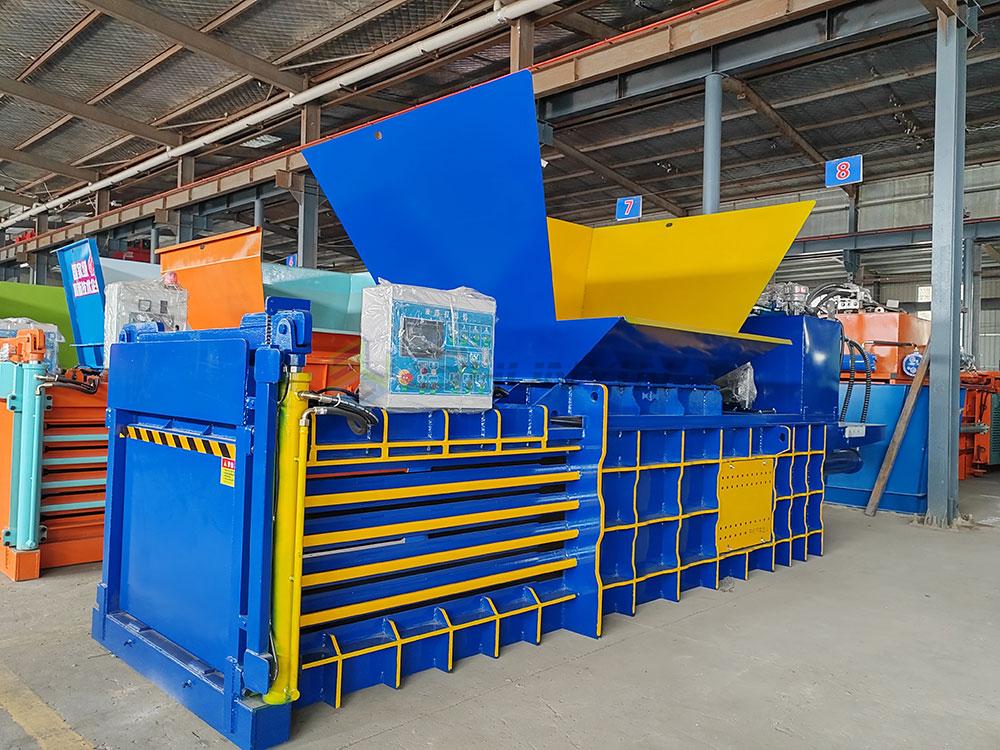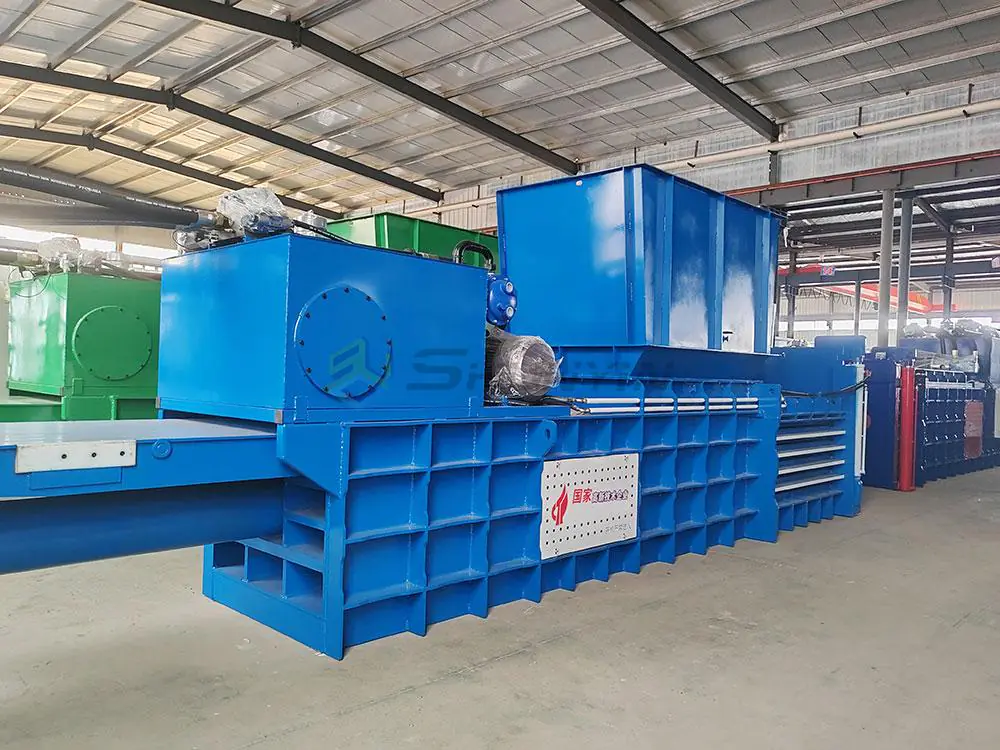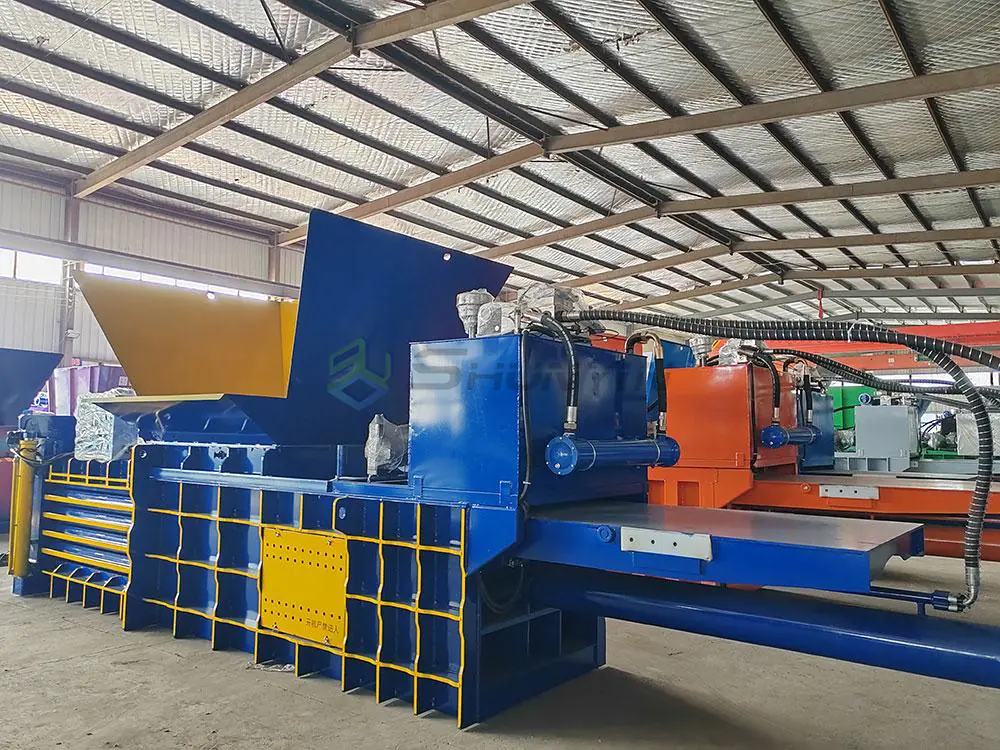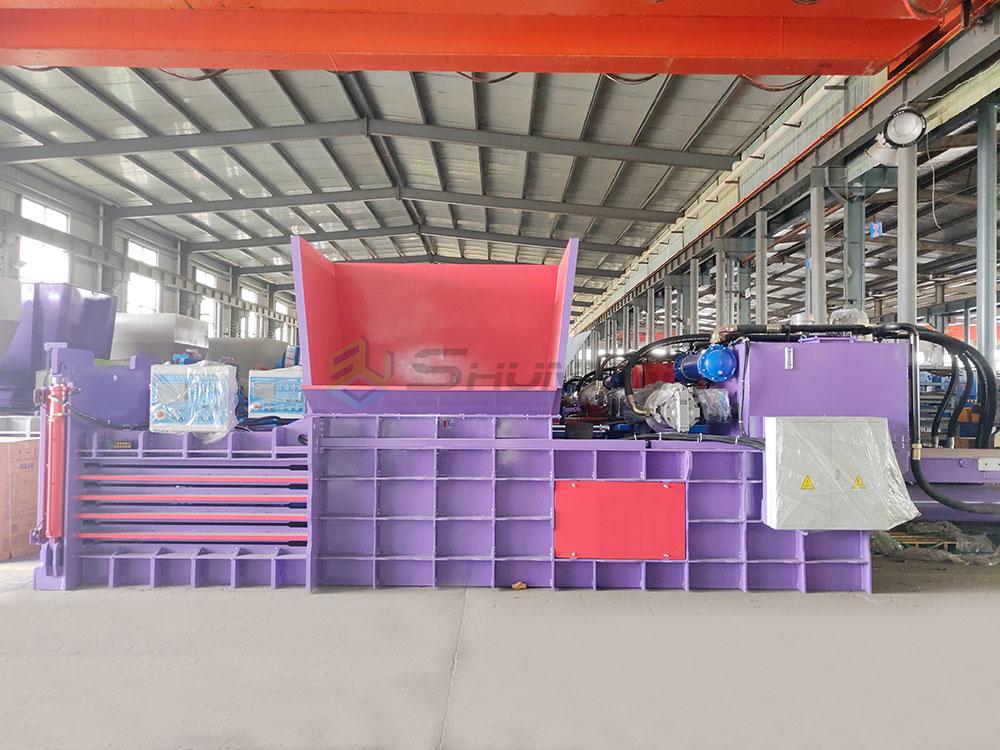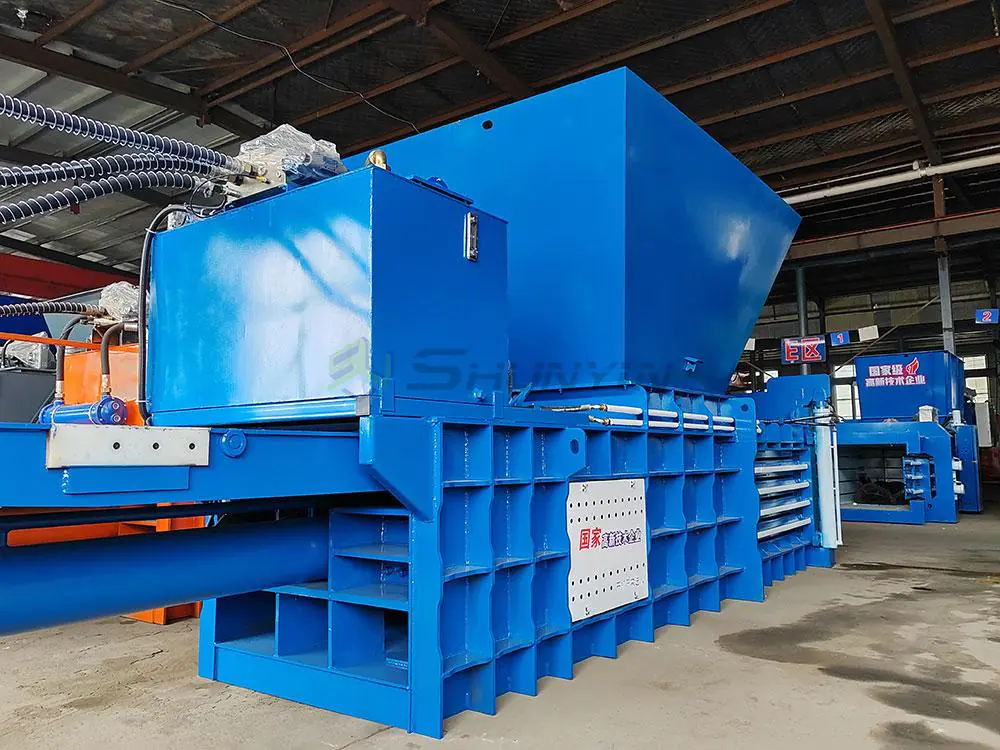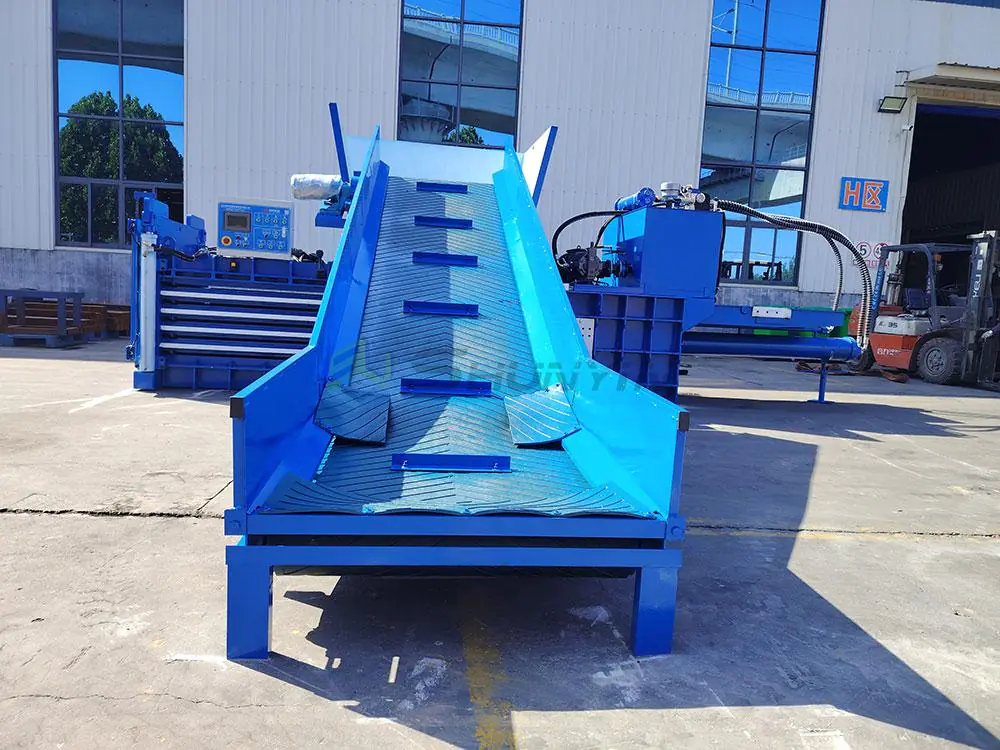
Every manufacturing facility manager I’ve met shares the same frustration – mountains of waste materials eating up valuable floor space while recycling costs keep rising. What if there’s a machine that could turn this liability into profit?
Industrial balers compress recyclable materials into dense, manageable bales, significantly reducing waste volume by 90% while increasing recycling revenue. Prices range from $15,000 vertical balers to over $200,000 for fully automated horizontal systems. These heavy-duty machines handle cardboard, plastics, metal scrap and specialty materials through hydraulic compression, with throughput capacities from 1-30 tons/hour depending on model and material type. As a manufacturer with 15 years’ experience exporting to 28 countries, I’ll break down exactly how different baler types solve specific waste challenges – crucial knowledge for buyers comparing international suppliers.
Let’s examine the four key factors determining baler selection and ROI:
How much does a recycling baler cost?
The financial director at a Canadian packaging plant recently told me: "We almost purchased the cheapest baler until your team showed us hidden costs in maintenance and bale quality." True costs extend beyond the price tag.
Recycling balers cost between $15,000-$250,000+ depending on type, automation level and throughput capacity. Vertical balers start at $15k (manual) to $60k (semi-auto), while horizontal models range $45k-$250k. Fully automated systems with conveyor integration exceed $300k. Operational costs average $2.8-$7.6 per ton processed.

Breaking Down Total Cost of Ownership1
| Vertical Balers | Horizontal Balers | Fully Automated Systems | |
|---|---|---|---|
| Initial Investment | $15k-$60k | $45k-$250k | $300k+ |
| Throughput Capacity | 1-5 tons/day | 5-30 tons/day | 30-100 tons/day |
| Labor Requirements | 2-3 workers | 1-2 workers | Unmanned operation |
| Maintenance Costs/Year | $1,200-$4,500 | $3,800-$12,000 | $18,000+ |
| Bale Density (lbs/cubic ft) | 12-18 | 22-30 | 30-40 |
| Space Requirements | 200-400 sq.ft | 600-1,200 sq.ft | 1,500+ sq.ft |
| ROI Period | 18-36 months | 24-48 months | 5-7 years |
Key considerations from our North American clients:
- Material Type Matters – Plastic film requires different compression than metal shavings
- Certification Costs – CE/UL certifications add 12-18% to base price but prevent customs issues
- Hidden Shipping Costs – Full container load (FCL) vs loose cargo rate differences
Our engineers developed a cost calculator that factors in your specific material volume, labor rates and local recycling prices – Get Custom Quote
What is a baler in waste management?
During a facility audit in Ontario last month, I watched workers hand-sorting cardboard behind a 1990s baler. The owner sighed: "We call it The Beast – breaks down weekly but we can’t afford downtime." This is why understanding baler mechanics is crucial.
A waste baler is a hydraulic compressing machine that consolidates recyclables into compact bales for efficient storage/transport. It consists of a steel chamber, hydraulic power unit (20-150HP), compaction platen and bale tying system. Modern versions achieve 40:1 volume reduction through PLC-controlled compression cycles.

Anatomy of Modern Balers
Hydraulic System
- Pump Types: Gear (entry), Piston (premium)
- Pressure: 2,000-3,500 PSI
- Oil Capacity: 20-200 gallons
Control Systems
- Basic: Relay logic
- Advanced: Siemens PLC with HMI
- Safety: Light curtains, emergency stops
Chamber Design
- Vertical: Fixed chamber (size limits)
- Horizontal: Expandable chamber
- Specialty: Closed-door for dusty materials
Material-Specific Features
- Corrosion-resistant steel for wet waste
- Spark-proof motors for flammable materials
- Oil-cooling systems for continuous operation
We recently upgraded a Japanese client’s system to handle 8-ton daily PET bottle volume – key modifications included:
- Stainless steel ram face for acid resistance
- Dual compression cycles (pre-compact + final press)
- Automated wire-tying with optical sensors
Which machine is used for waste management?
At last year’s WasteExpo, a logistics manager asked me: "Should we get a shredder, compactor or baler?" The answer depends on material characteristics and end goals…
Key Waste Management Machines Compared
| Machine Type | Function | Best For | Throughput | Volume Reduction |
|---|---|---|---|---|
| Balers | Compress into bales | Recyclables | 1-30 t/h | 12-40 lbs/cu.ft |
| Compactors | Crush into containers | Municipal waste | 0.5-5 t/h | 3-5:1 ratio |
| Shredders | Reduce material size | Confidential docs | 50-500 kg/h | N/A |
| Granulators | Grind into pellets | Plastic recycling | 200-2,000 kg/h | 4-8mm output |

What is an industrial baler?
During a factory visit in Guangdong, I observed our 120-ton horizontal baler processing automotive steel scraps. The purchaser noted: "This replaced three older machines – now we bale UN-certified bundles for export."
Industrial balers are heavy-duty compression systems for processing high-volume recyclables in manufacturing/logistics. Key features include:
- 50-300 ton compression force
- Customizable chamber sizes (2-6m)
- Automated bale tying/ejection
- Integration with conveyor systems
- Real-time performance monitoring

Technical Specifications Breakdown
Structural Components
- Frame: Steel plate (12-30mm thickness)
- Hydraulic Cylinder: Chromium-plated rods
- Platen: Replaceable wear plates
Performance Metrics
- Cycle Time: 90-300 seconds
- Energy Use: 15-75 kW
- Noise Level: 72-85 dB(A)
Customization Options
- Chamber extensions
- Multiple tie-wire positions
- Dust collection systems
- Bale weight sensors
Our latest innovation – the SY-280H model – features IoT-enabled predictive maintenance, reducing downtime by 40% in pilot installations.
Conclusion
Selecting the right baler requires analyzing material types, volume and operational needs. As a factory-direct manufacturer, we help buyers avoid overpaying for unnecessary features. Contact our engineers for personalized machine recommendations and live video factory tours.
-
Understanding the Total Cost of Ownership helps in making informed decisions about baler investments and operational efficiency. ↩


